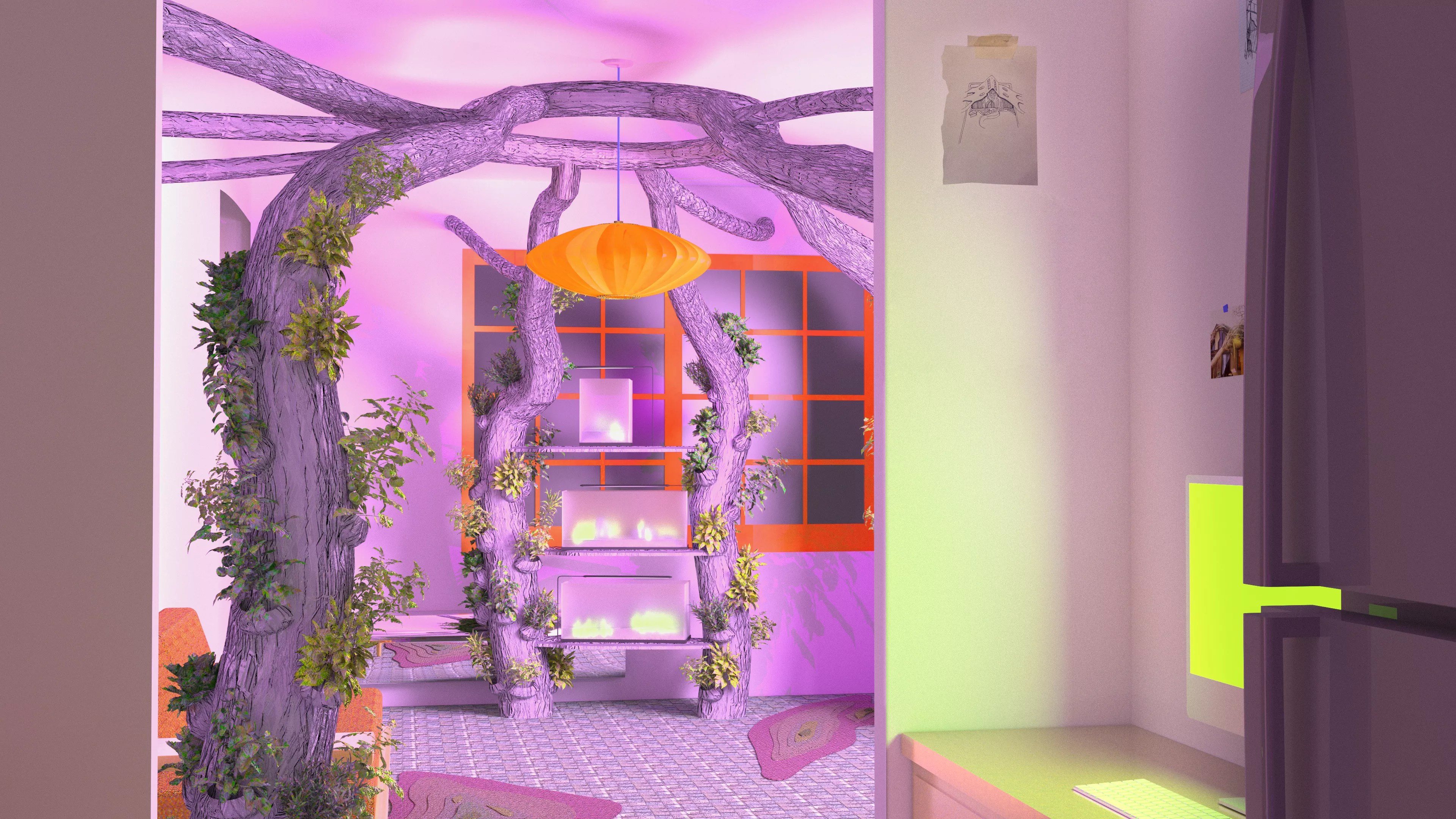
Lee Pivnik photo

Audio By Carbonatix
A Miami artist has received a $50,000 grant to fund his next ambitious art project.
Lee Pivnik, whose ecologically minded sculptures have won acclaim locally, is one of the recipients of the 2025 Creative Capital Awards. According to a statement from the organization, the nonprofit will give a total of $2.45 million to 55 artists to help them create 49 new projects.
Pivnik, a fifth-generation Floridian, is the only winner from the state. He says he earned the grant on his third try and will use the money to fund his project, The Living Room: A Symbiotic Home. He’s been working on the piece, which “approaches architecture from a place of sculpture for the purpose of environmental remediation,” since 2021. The plan is to convert his studio apartment into an aquaponics farm using biomorphic design to shape his home while using it to grow food. The project is meant to counter the more environmentally damaging architecture that has conventionally been built in Miami over the years.
“The goal isn’t just to be growing food inside the apartment, but to see if we could use a plant-based system to remediate some of the issues we’re facing here in the Everglades,” Pivnik says. “I’m turning 30 this year, and I want to spend my life here, and that’s a life that seems longer than some of the predictions for critical infrastructure in the city surviving sea level rise. And so I think these are issues to tackle now because even if we didn’t have a sea level rise issue, we’d still have a city that has this kind of parasitic relationship to the environment around it.”
Miami, make your New Year’s Resolution Count!
We’re $15,000 away from our End-of-Year campaign goal, with just a couple of days left! We’re ready to deliver — but we need the resources to do it right. If Miami New Times matters to you, please contribute today to help us expand our current events coverage when it’s needed most.
Pivnik also earned a $6,000 Wavemaker grant from local arts nonprofit Locust Projects to fund The Living Room, which was proceeded by a two-year research period. “I’m not a self-taught artist, but I am a self-taught ecologist,” he jokes.

A mock-up of Lee Pivnik’s project The Living Room: A Symbiotic Home.
Lee Pivnik rendering
The artist says he was partially inspired by conceptual artist Mel Chin, whose ongoing 1991 project, Revival Field, attempts to use “hyperaccumulator” plants to decontaminate an industrial waste site of toxic heavy metals. The artist funded the project through a National Endowment of the Arts grant after the National Science Foundation turned him down.
“[The NSF] was like, ‘No, this is too radical. This doesn’t make sense. This isn’t scientific enough,'” says Pivnik. “So he turned to the NEW and proposed it pretty identically, as an artwork this time, and described the plants as [being] in a process of sculpting the landscape. And they funded it.”
Pivnik’s previous work has attempted to reimagine what life in Miami could look like as climate change continues to affect the city. His project “Chimeras” at Dale Zine, which New Times called one of the best art exhibitions of 2024, visualized a flooded future Miami in which queer rebels disguised as native animals take to the swamps to evade a repressive surveillance state.
Creative Capital was founded in 1999 as a response to NEA funding cuts amid the ’90s culture wars. The nonprofit foundation “uplifts risk-taking, underinvested artists with unrestricted project grants, professional development, and community-building services to advance freedom of expression and foster sustainable careers,” according to its mission page.
The Creative Capital Awards are the foundation’s flagship program, with grants given for projects in visual arts, technology, performing arts, film/moving image, and literature. Notable past recipients include documentarian Laura Poitras (Citizenfour, All the Beauty and the Bloodshed) and artists such as Sanford Biggers and Jeffrey Gibson. Of this year’s recipients, 75 percent are artists of color, 56 percent are women, 18 percent are transgender, nonbinary, and gender nonconforming, and 11 percent are disabled.